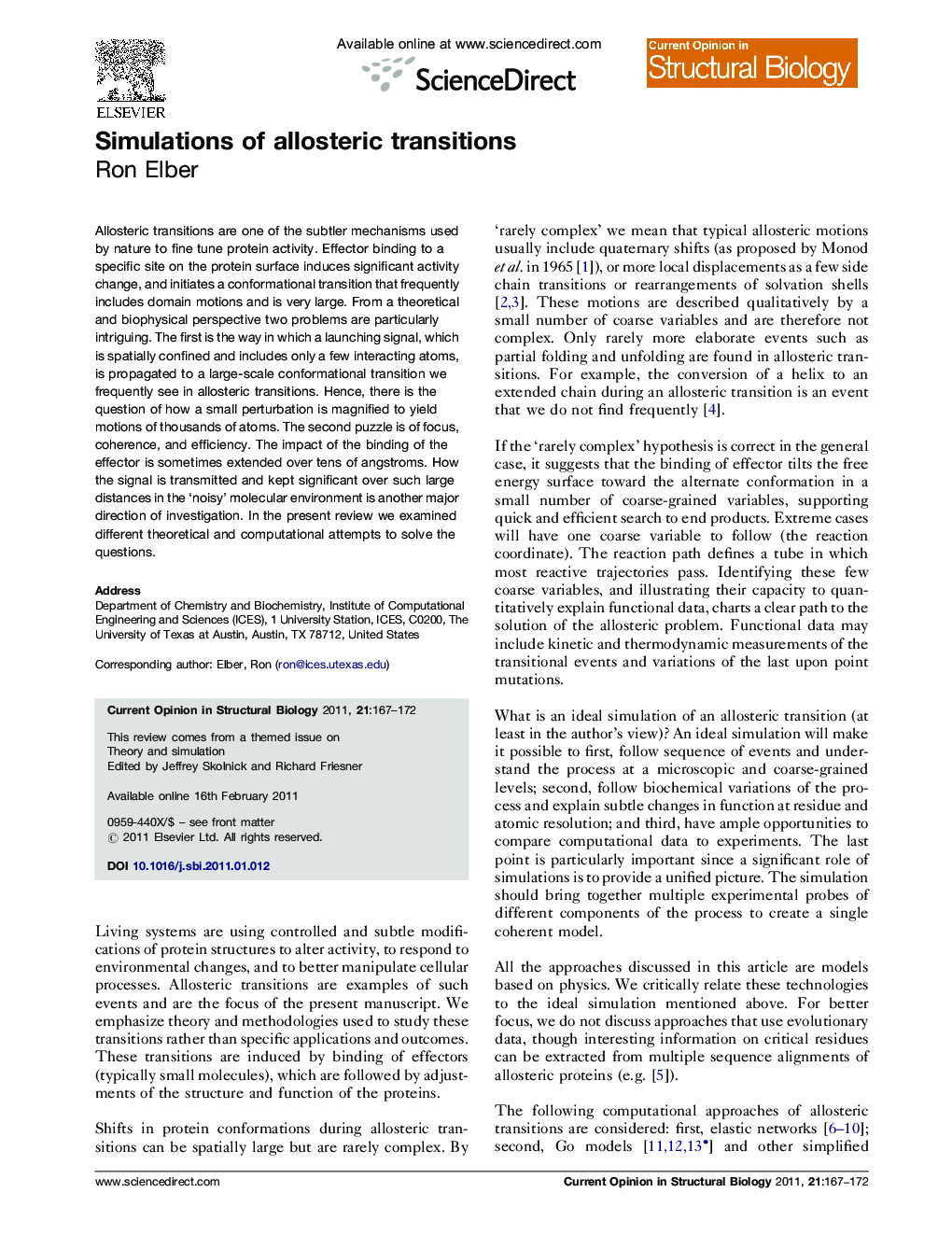| Article ID | Journal | Published Year | Pages | File Type |
|---|---|---|---|---|
| 1979434 | Current Opinion in Structural Biology | 2011 | 6 Pages |
Allosteric transitions are one of the subtler mechanisms used by nature to fine tune protein activity. Effector binding to a specific site on the protein surface induces significant activity change, and initiates a conformational transition that frequently includes domain motions and is very large. From a theoretical and biophysical perspective two problems are particularly intriguing. The first is the way in which a launching signal, which is spatially confined and includes only a few interacting atoms, is propagated to a large-scale conformational transition we frequently see in allosteric transitions. Hence, there is the question of how a small perturbation is magnified to yield motions of thousands of atoms. The second puzzle is of focus, coherence, and efficiency. The impact of the binding of the effector is sometimes extended over tens of angstroms. How the signal is transmitted and kept significant over such large distances in the ‘noisy’ molecular environment is another major direction of investigation. In the present review we examined different theoretical and computational attempts to solve the questions.
Research highlights► In this study we consider computational methods for allosteric transitions. ► We examine accuracy and efficiency of coarse-grained and atomically detailed approaches. ► We argue that structural features of allosteric pathways can be learned from coarse-grained models. ► Investigating thermodynamics and kinetics and connecting them to structure require detailed models. ► Enhanced sampling techniques promise to make detailed calculations a routine.
